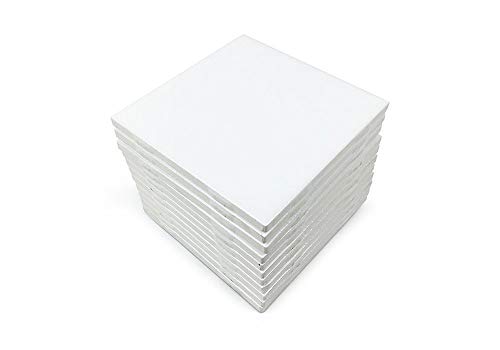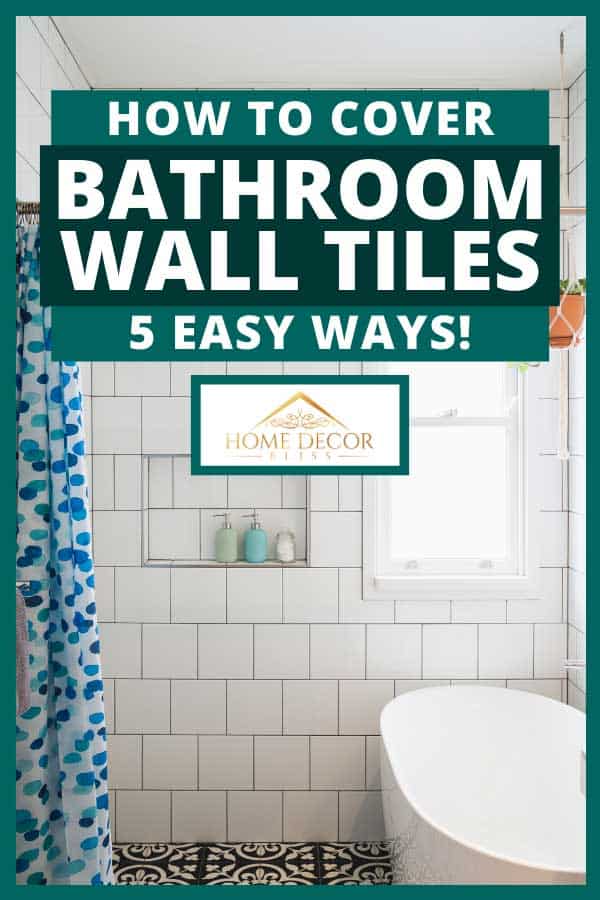
If you've recently moved into an older home, you may be fixing things up and wondering, "How can I cover these ugly or damaged bathroom wall tiles?" Have no fear - we're here to give you lots of ideas, including a few temporary fixes that you can use in a rented house or apartment. Keep reading to get inspired!
There are a lot of options out there for covering bathroom wall tiles. The most important thing is to remember that your solutions need to be waterproof. Even if they aren't directly getting wet from your sink or shower, they'll still need to withstand lots of condensation produced by the humidity of your shower. Here are a few ideas:
- Paint them with waterproof paint, such as epoxy.
- Cover them with a shower curtain liner.
- Install a shower liner or surround kit.
- Apply wall stickers that can be used in a high-humidity environment.
- Attach beadboard panels painted with waterproof paint.
This brief list will hopefully give you a good idea of some options to try, but if you need more detailed directions, you're in luck! We'll delve into each of these ideas in this article and answer some questions you may have, as well.
Use Waterproof Paint
If you're able to make a permanent alteration, paint is one of your best options. This can give tiles that are scratched, stained, or an outdated color a new lease on life. You could even use this opportunity to add a fun pattern, such as a checkerboard!
When you're painting your tiles, make sure to use waterproof paint that is formulated to stick to slick surfaces - latex and epoxy are the best options. All of these paints come in matte, glossy, or satin finishes to help you achieve the perfect look. You can even find paint that helps block the development of mold! Alternately, you can select any paint you'd like and add a waterproof sealant on top.
You'll want to follow a few simple steps when painting your tiles:
- Remove the grout with a specialized tool and thoroughly scrub the tiles to remove any soap scum or mold. An extensive scrub will ensure that you have a smooth, clean surface on which to paint.
- Paint the tiles with a primer that's specially formulated for tiles and let it dry thoroughly - you won't be able to use the tub during this time.
- After the paint has dried, sand it lightly to create a textured surface that's easier for the next coat of paint to adhere to.
- Apply as many coats of your selected paint as required to create the look you prefer and let it dry.
- When the paint has dried, reapply the grout to add the finishing touch.
You can also check out our article Can Bathroom Tiles Be Painted? (Here's How) for more detailed instructions.
We sometimes add affiliate links and content that was curated and created by our team with the help of advanced ai tools to help showcase the best design styles.

Cover Up With a Shower Curtain Liner
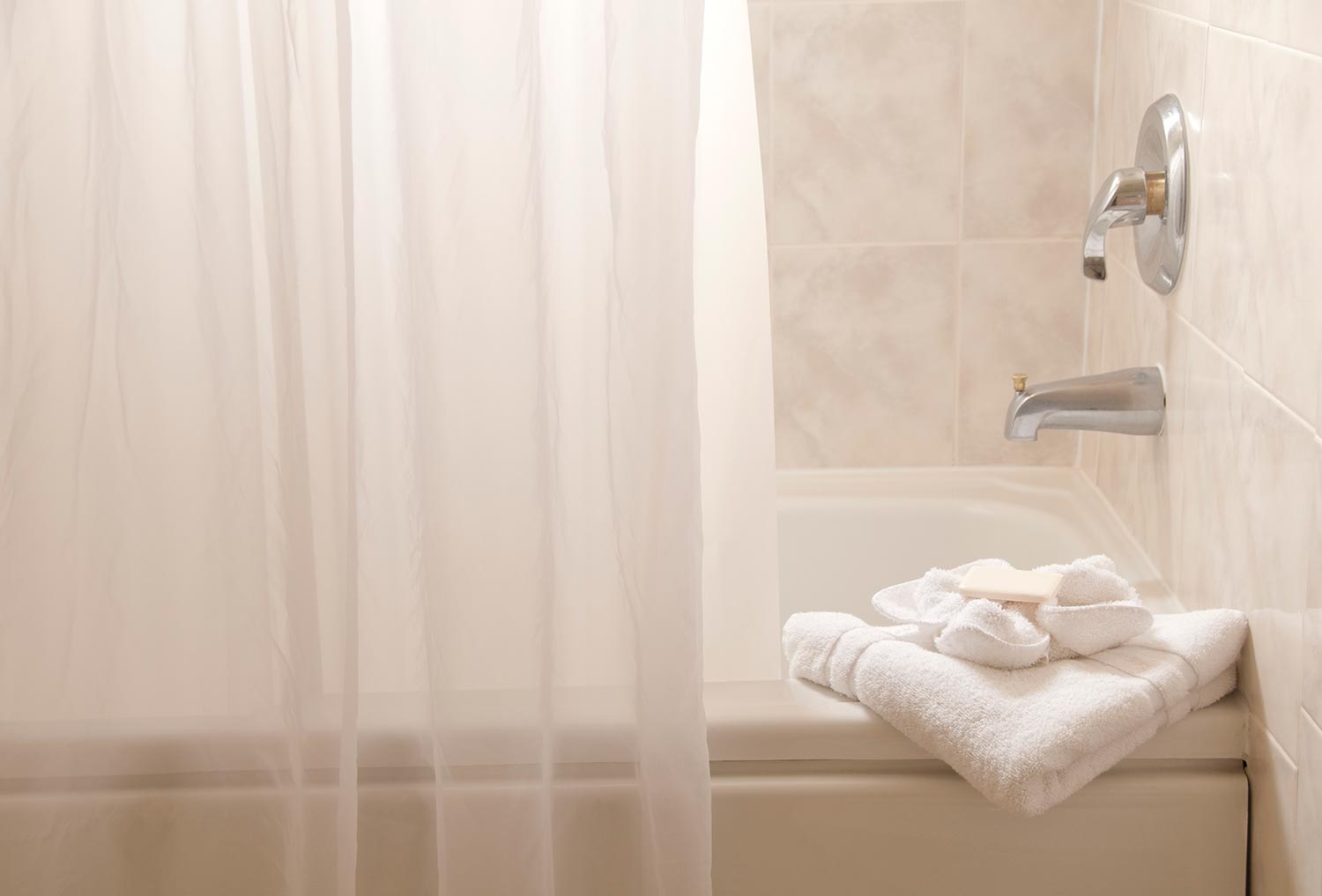
For a quick, temporary fix that's perfect for a rented home, try hanging a shower curtain liner. Install a curtain rod made from a waterproof material such as plastic and add an attractive, waterproof shower curtain liner with a smooth finish. You can add peel-and-stick strips of Velcro to the edges of the curtain liner to help it stick to the wall more firmly. Just make sure to choose a type of Velcro that can easily be removed when you move!
Install a Shower Liner or Surround Kit
A shower liner is a piece of solid plastic or PVC that is made to fit the shower perfectly and should be professionally installed. This is a good option if your tiles are seriously damaged, but you'd prefer a cheaper option than replacing all of the tiles. It's also a quick way to get the look of a new bathroom without needing to demolish the existing room. Plus, it can also cover water damage on walls.
If you'd like to install a full shower liner that covers both the walls and the tub, you'll need to hire professionals, but you can install a surround kit (also referred to as bathroom wall panels) yourself. This is a piece of plastic or PVC that only covers the walls instead of adding a layer to the entire tub.
Since shower liners and surround kits are used to cover up the wall, there are a few things you'll need to be aware of for your safety:
- Make sure that any mold has been completely removed. Simply covering up mold won't do anything to fix the problem, and could make it even worse. To remove small amounts of mold, you can scrub the wall using bleach mixed with water and then add a coat of anti-mold and mildew paint.
- If any moisture gets trapped between the wall and the shower liner, it could cause mold. Double-check the security of the seal if your liner is being professionally installed and be sure to use the best possible adhesive if you're installing a surround kit yourself.
Apply Wall Stickers
Wall stickers are another classic quick fix for rental units with subpar walls. You can find wall stickers that are specially made for rooms with high levels of humidity, so make sure to choose these to preserve your room's new look.
To apply your new wall stickers, clean the walls thoroughly and let them dry; apply the stickers, taking care to avoid air bubbles; and let the adhesive set for at least 24 hours before using the shower.
Attach Beadboard Panels
Beadboard is a classic wall paneling style made up of many narrow strips of wood. It's a popular choice for wainscoting in the kitchen and living room, but did you know that you can use it in the bathroom as well? Pre-treat your beadboard panels with waterproof paint before installing them - you can use the tips from our advice on covering tiles with waterproof paint. You'll also want to finish the edges with grout to make sure no moisture can become trapped between the panels and wall and cause mold or mildew.
Are Bathroom Wall Panels Better Than Tiles?
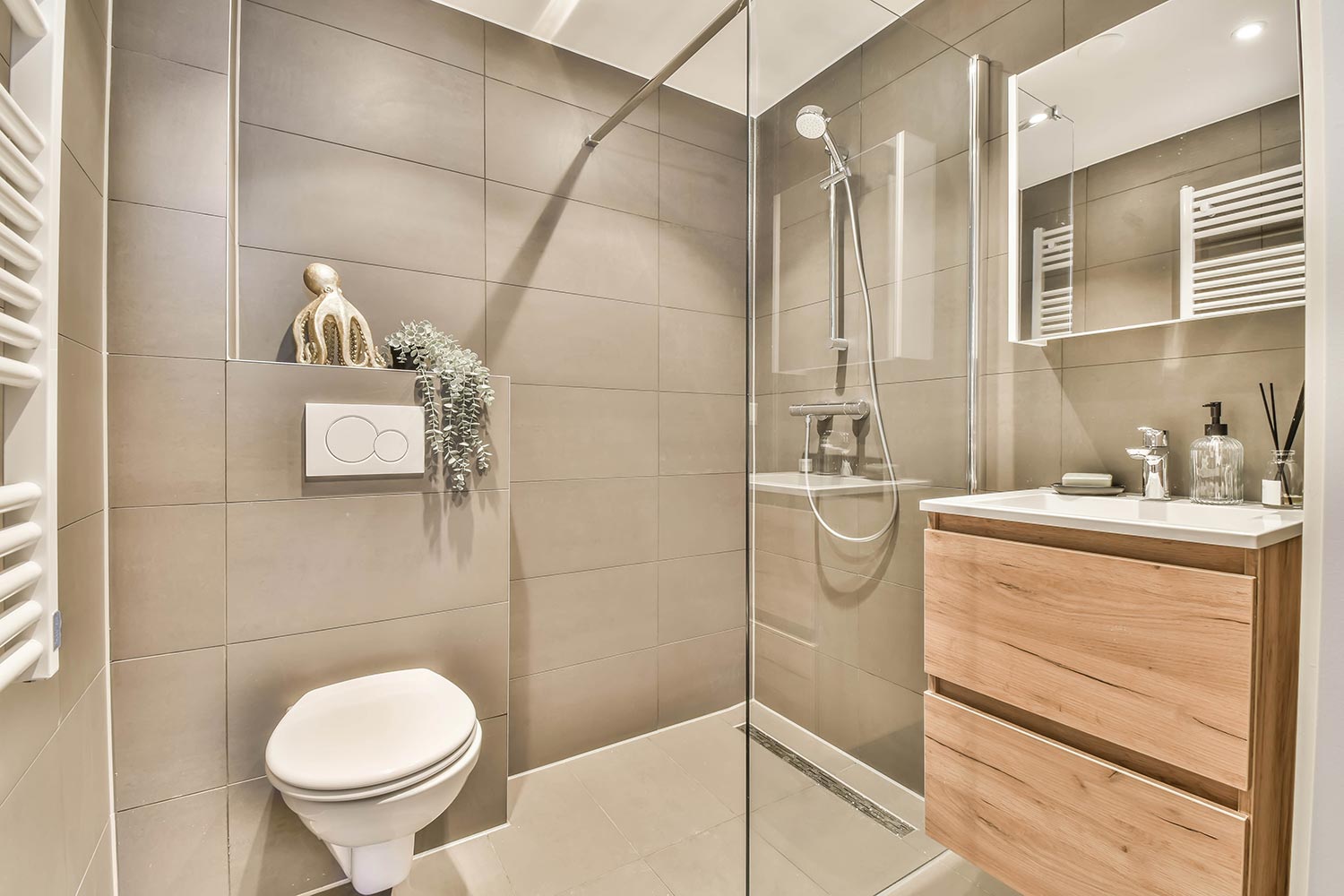
The preference for bathroom wall panels, as opposed to ceramic tiles, is mostly a personal choice, so we'll give you a list of pros and cons for each and allow you to make your own decision!
Bathroom Wall Panel Pros
- The smooth, seamless construction makes wall panels completely waterproof.
- They're easier to clean and maintain than tiles.
- If you want a sleek, modern look, they're a perfect choice.
- They're quick and easy to install over pre-existing tiles.
Bathroom Wall Panel Cons
- They can cause a growth of mold and mildew if incorrectly installed.
- Plastic can break and become stained more quickly than ceramic tiles.
Tile Pros
- Tiles create a classic, timeless look.
- Ceramic is completely waterproof and a more natural, eco-friendly option than plastic, which is usually used for wall panels.
- You can create unique, creative patterns and designs with different colors of tiles.
Tile Cons
- Tile can be messy and challenging to install correctly.
- Grout breaks down over time and makes walls less waterproof.
- Tiles can appear dated.
If you decide to go with tiles, make sure you check out our article Should a Bathroom Be Fully Tiled? to determine if you'd rather use them exclusively in the shower or the entire bathroom.
What is the Best Material to Use on Bathroom Walls?
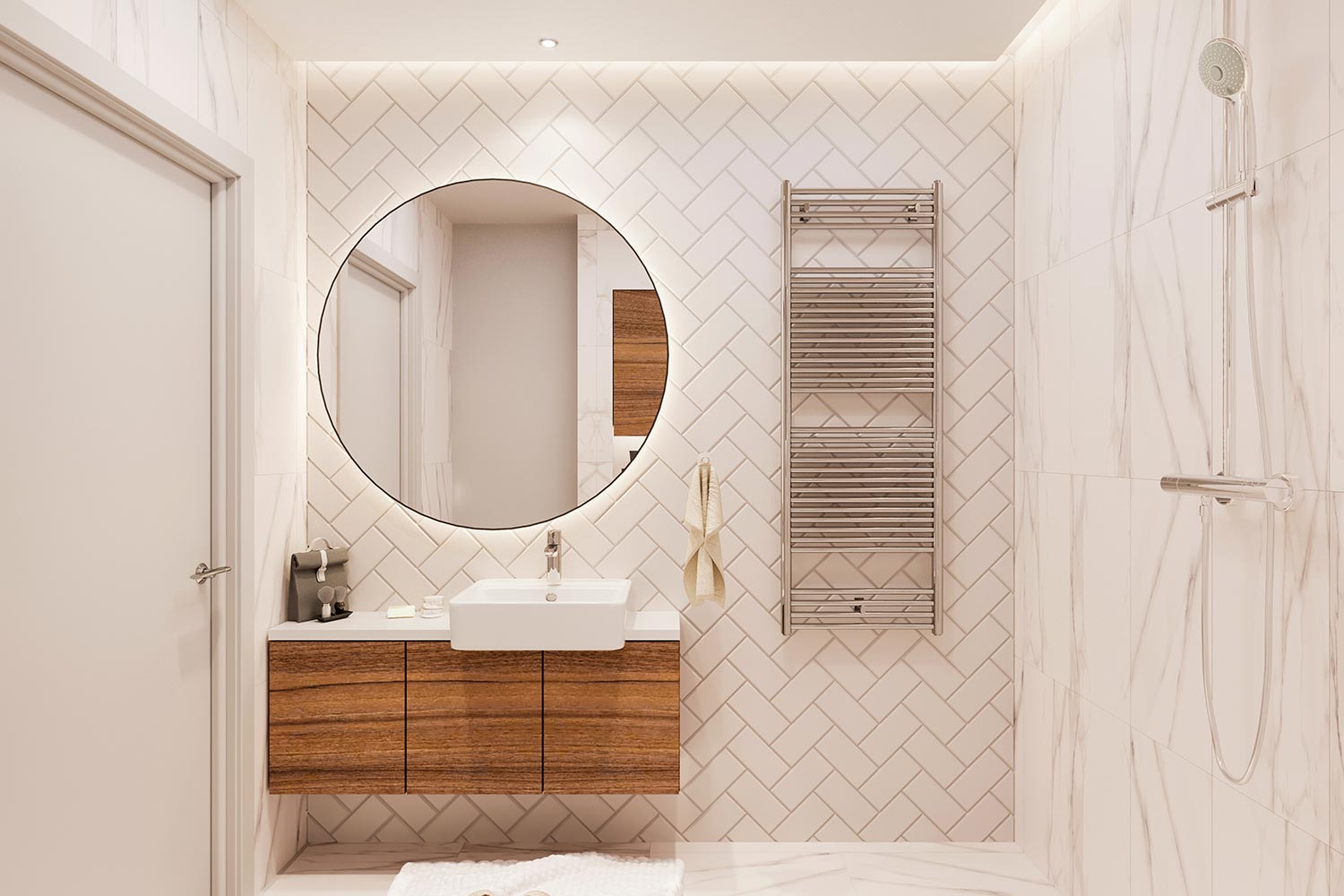
An essential component of choosing a material for your bathroom walls is making sure it's waterproof. This can include:
- Ceramic tiles. These are a popular choice for their slick, waterproof surface and timeless design. Just make sure to use grout to fill in the gaps!
- Acrylic sheets. Wall panels are typically made from plastic or acrylic sheets, which provide a seamless, waterproof surrounding for your shower.
- Stone. If you have the budget, the stone is a luxurious waterproof material that will bring a gorgeous, natural vibe to your bathroom.
- Paint on drywall. If you use waterproof paint such as latex or epoxy, you can turn any surface, even porous drywall, into perfect conditions for a shower or tub.
Can You Use Laminate Flooring on Bathroom Walls?
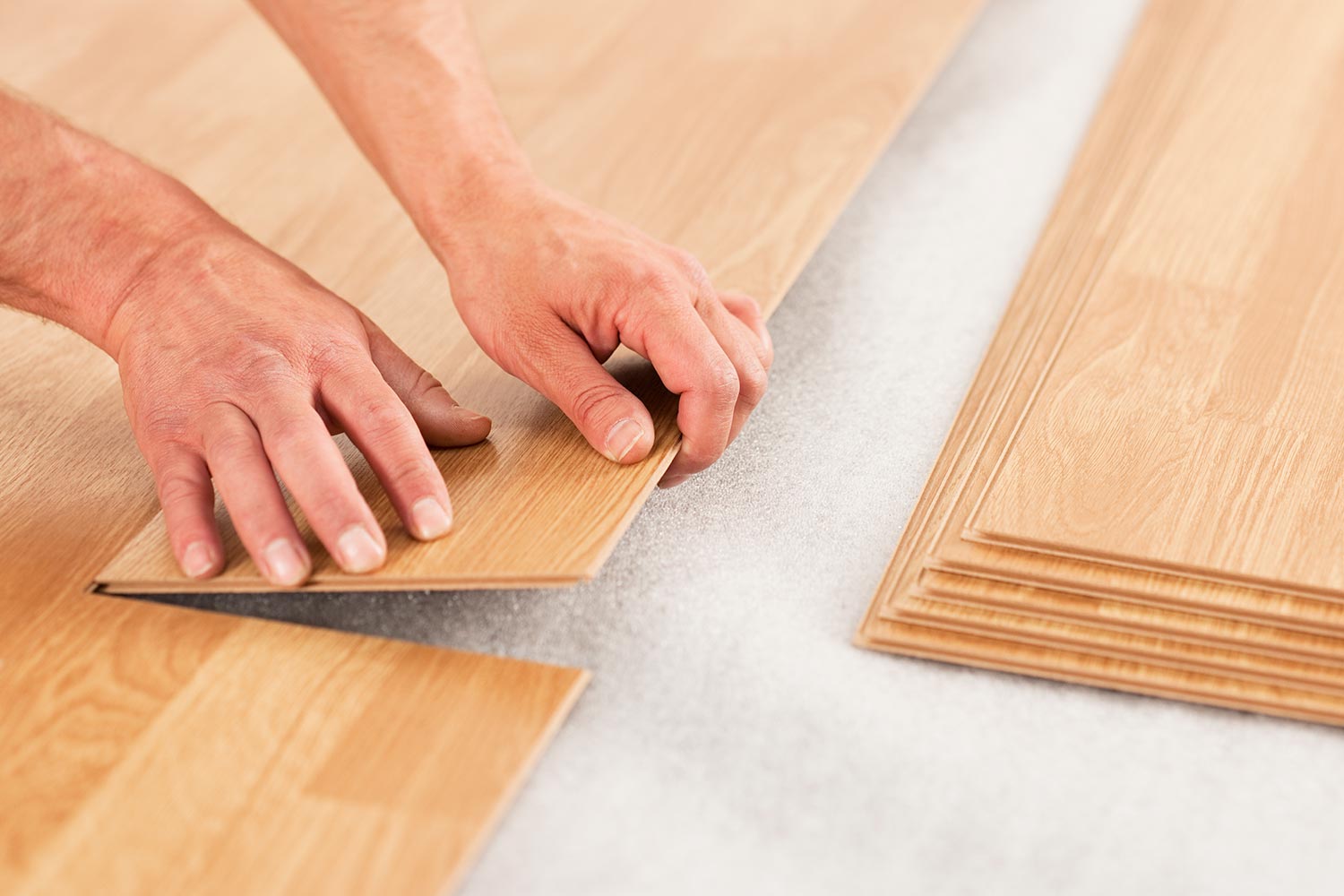
Your choices just opened up - yes, you can install laminate flooring on bathroom walls! This is a great way to instantly add a rustic vibe with completely waterproof imitation wood. There are just a few things to keep in mind:
- The installation process is very similar to installing laminate flooring on your floors and involves permanently attaching the flooring to your walls with adhesive and nails.
- You'll need to carefully measure and cut the material to fit your bathtub or shower.
- Allow the flooring to acclimate to the moisture and temperature in your bathroom to avoid any unpleasant surprises as the wood expands or contracts. Remove the wood from its box and let it sit in the bathroom for several days.
- An expansion gap of about 1/4" around the wall is necessary to prevent the flooring from buckling as it expands in reaction to the humidity of the bathroom.
We hope you find this article helpful. If you can think of more ways to cover bathroom tiles, leave us a comment to let us know!
FAQs
How can I cover my shower tiles without removing them?
There are a few ways to cover shower tiles without removing them. You can use epoxy paint designed explicitly for tiles or install a tile sticker over the existing tiles. You can apply a thin layer of concrete overlay over the tiles and then paint it. Finally, you can cover the tiles with a mural to give the shower a new look.
Can you cover existing shower tile?
Yes, you can cover the existing shower tile. It is possible to tile over existing tile as long as it is in good condition and securely attached to the wall or floor. Make sure to clean the existing tile to remove any dirt or debris. You can also use the backer board to provide a level surface for installing the new tiles.
How to cover shower tiles cheaply?
Here are four clever ideas to cover tiles:
- Paint the tiles: Painting is the quickest, most affordable way to cover shower tiles cheaply. Use high-quality, water-resistant paint to ensure it will stand up to the bathroom's humidity.
- Use peel-and-stick vinyl tiles: Peel-and-stick vinyl tiles are an easy and inexpensive way to cover shower tiles. They come in various colors, styles, and finishes and are easy to install.
- Use a tile sticker: Tile stickers are an easy way to give existing tiles a new look without the hassle of replacing them. You can explore different styles and colors and find what fits your bathroom decor.
- Install a tile mural: Installing a tile mural is a fantastic way to add a unique and eye-catching design to your shower. Tile murals are available in various colors, styles, and sizes and can be purchased online or at a local home improvement store.
Can you waterproof over tiles in the shower?
Yes, you can waterproof over tiles in a shower as long as the tiles are in good condition and the grout is in good condition. It would be best if you used a waterproofing membrane such as a liquid rubber membrane or a sheet membrane to cover the surface of the tiles and ensure that water does not penetrate the grout lines.







